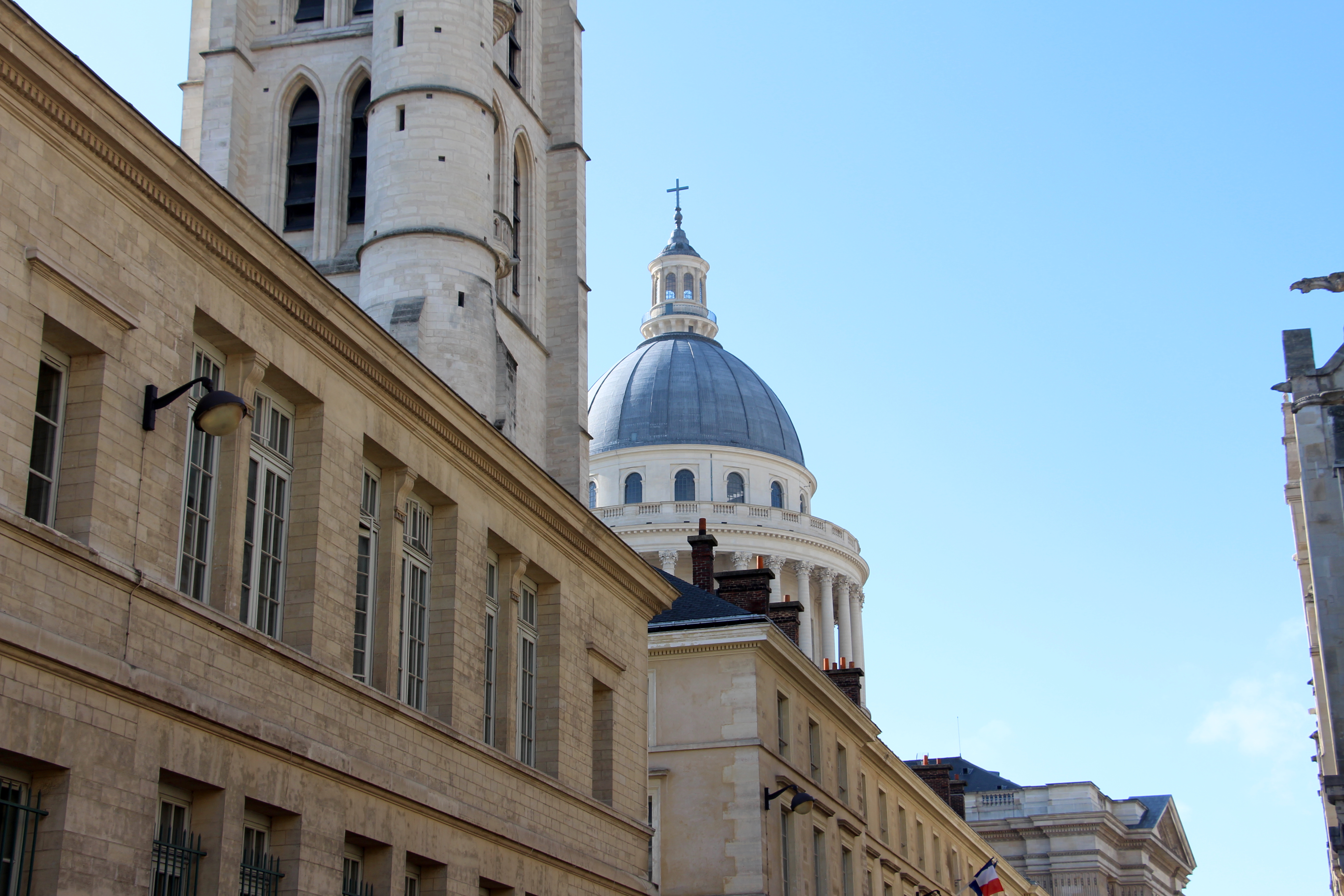1. Unlike many other Western European cities, Paris, as it stands today, is fairly new. In the mid-19th century, the city underwent a massive transformation at the hands of Emperor Napoleon III and his city planner, Georges-Eugène Haussmann, which widened avenues and created massive green spaces, giving Paris the airy, unified aesthetic it boasts today. But in certain parts of the city, particularly older neighborhoods, elements of the claustrophobia that once defined Paris can still be found.
2. Part of the Emperor’s motivation for the city redesign has to do with Paris’ political history. For several decades leading up to the Haussmannisation of Paris, the city had been wrought with rebellions and revolts. By widening streets, Napoleon hoped to quash these uprisings. But some of the smaller ruelles that Parisians used to barricade can still be found in central Paris, particularly in the historic Marais.
3. Behind Saint-Antoine Church, a hodgepodge of old and new coexists. The back of the Village Saint-Paul shopping area is hemmed in with a high school courtyard, and nearby, some of the last vestiges of Philippe-Auguste’s medieval wall remain.
4. Saint-Eustache Church, a medieval behemoth that once towered over the Les Halles market (closed in 1971) still gives some of the space surrounding it this confined feel.
5. While looking up in Paris will likely never feel as claustrophobic as it does in my hometown of Manhattan, there are still places in the city where this original urbanness, so divided from the Paris most people know and love today, remains.




